REICH/RICHTER
Thursday 6 April 2023, 7.30pm
Southbank Centre’s Royal Festival Hall
Julius Eastman Joy Boy I
Mira Calix Nunu
Anna Clyne Fractured Time (world premiere)
Julia Wolfe Tell me everything
Julius Eastman Joy Boy II
Interval



Steve Reich Reich/Richter
Manoj Kamps conductor
Sound Intermedia
WELCOME
Welcome to tonight’s concert.
Welcome to the Southbank Centre
We’re the largest arts centre in the UK and one of the nation’s top visitor attractions, showcasing the world’s most exciting artists at our venues in the heart of London. We’re here to present great cultural experiences that bring people together, and open up the arts to everyone.
The Southbank Centre is made up of the Royal Festival Hall, Queen Elizabeth Hall, Purcell Room, Hayward Gallery, National Poetry Library and Arts Council Collection. We’re one of London’s favourite meeting spots, with lots of free events and places to relax, eat and shop next to the Thames.
Karen Jones flute
Helen Keen flute
Tom Blomfield oboe
Rachel Harwood-White oboe
Mark van de Wiel* clarinet/bass clarinet
Jordan Black clarinet
Jonathan Davies bassoon
Simon Haram* soprano/alto saxophone
Timothy Ellis horn
Holly Clark trumpet
Ryan Hume trombone
Jonathan Morton* violin
It’s exciting for us to be staging this concert and performing one of Steve Reich’s more recent ensemble compositions with Gerhard Richter’s film. As important to us is the music in the first half with music by Julia Wolfe, the world premiere by Anna Clyne (for which we are grateful to our colleagues Kaleidoscope Chamber Orchestra in LA who commissioned the piece) and not least Nunu, our tribute in performance to Mira Calix who was a friend of the ensemble and who made work with and for us. We are also very pleased to welcome Manoj Kamps to lead us for the first time, who helped us realise this version of Julius Eastman’s Joy Boy
Hilaryjane Parker violin
Paul Silverthorne* viola
Tim Gill* cello
Enno Senft* double bass
Anne Denholm harp
Philip Moore piano
Clíodna Shanahan piano
David Hockings* percussion
Owen Gunnell percussion
*London Sinfonietta Principal Player
The London Sinfonietta is grateful to Arts Council England for its generous support of the ensemble, as well as the many other individuals, trusts and businesses who enable us to realise our ambitions. This event is produced by the London Sinfonietta, and supported by the Southbank Centre, with the friendly support of the Ernst von Siemens Music Foundation. The work of the London Sinfonietta is supported by Arts Council England and the John Ellerman Foundation
Moving Picture (946-3) © Gerhard Richter and Corinna Belz. Film by Gerhard Richter and Corinna Belz, Music: Steve Reich, Montage: Rudi Heinen, Curated by Hans Ulrich Obrist and Alex Poots
Did you enjoy this concert?
Let us know by filling in a short survey and you could win a £30 voucher to spend at Ethical Superstore.
Scan the QR code or go to https://uk.culturecounts.cc/s/xnLnf to be in with a chance to win!

WHAT WE DO
NEW MUSIC FOR NEW AUDIENCES
The London Sinfonietta always strives to extend its reach to more people with the inspiring sound of new music. From contemporary classical to jazz and experimental, and collaborations with different art forms including video, animation, theatre and literature, there’s something for everyone.
MUSIC IN SCHOOLS AND THE COMMUNITY
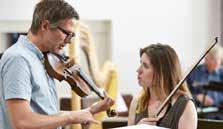
The London Sinfonietta was the first ensemble in the UK to launch a dedicated music education programme. This pioneering spirit has continued and flourished ever since, expanding to include regular performances and workshops with members of the public.
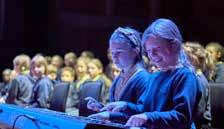
DEVELOPING TALENT
The London Sinfonietta supports emerging talent with its year-round programmes for composers, conductors and performers, giving early-career artists the opportunity to develop new skills and contacts as they establish themselves in the professional arena
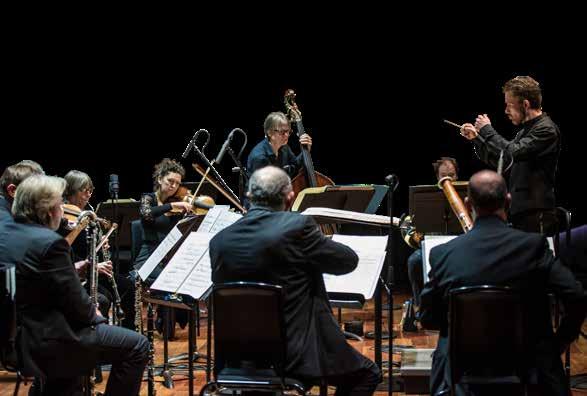
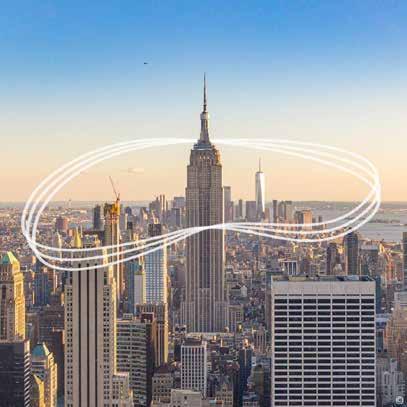
SUPPORT US
By making a donation to the London Sinfonietta, you can help create world-class new music projects both onstage and online. You can help us reach thousands of young people each year through our composition programmes in schools, and enable us to provide worldclass training to the next generation of talent. londonsinfonietta.org.uk/support-us
I hope you enjoy the concert and may become one of our supporters who, along with the Southbank Centre, Arts Council and various trusts and foundations help make our work happen, and to whom we are very grateful. You can follow our work on our digital channel and sign up to our

Simon Hendry visual production London Sinfonietta: 22/23
We hope you enjoy your visit. If you need any information or help, please ask a member of staff. You can also write to us at Southbank Centre, Belvedere Road, London SE1 8XX, or email hello@southbankcentre.co.uk
Subscribers to our email updates are the first to
REICH/RICHTER
Thursday 6 April 2023, 7.30pm Southbank Centre’s Royal Festival Hall

SEASON CONCERT PROGRAMME
Programme Notes
Julius Eastman Joy Boy
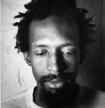
Between the hostile diminutives of Southern U.S. racism that give the term “boy” its fraught legacy, and the reclamation of Black innocence by Black people who demand the language back on its own terms, lives Julius Eastman’s Joy Boy — a composition that objectifies the ecstatic self in order to reclaim it in a world that projects suffering onto the Black psyche before it even has a chance to assert jubilance. Echoes of vocals that mimic displaced giggling give the composition a haunted atmosphere, as if the sound’s potential for conjuring joy is smeared with dread for its very own delights — or the dread of the backlash that Black delight might inspire. Is Black joy an indulgent form of selfdeception, this music asks. Can its subject, a selfactualized Black man, override its stigma without succumbing to rage or self-sabotage? There can be no answer but to play and replay it, to meet doubt with the resolve to go again, and fear with an allegiance to pleasure.
—NPR
Julius Eastman (1940 1990) was a composer, conductor, singer, pianist, and choreographer. A singular figure in New York City’s downtown scene of the 1970s and 80s, he also performed at Lincoln Center with Pierre Boulez and the New York Philharmonic, and recorded music by Arthur Russell, Morton Feldman, Peter Maxwell Davies, and Meredith Monk. “What I am trying to achieve is to be what I am to the fullest,” he said in 1976. “Black to the fullest, a musician to the fullest, a homosexual to the fullest.”
Mira Calix Nunu
Mira Calix’s seminal work Nunu, a composition for strings, electronics and live insects was first performed by the London Sinfonietta in 2003 and was most recently performed in March 2020 by


The effect is to go from an abstract painting to a series of gradually smaller anthropomorphic “creatures” (since the mirroring produces bilateral symmetry) to still smaller psychedelic abstractions to very fine stripes.
Richter was making a film of the book with Corinna Belz and asked me to compose the score. The film starts with the stripes, and then changes gradually to larger “creatures”. The film gets close to the full painting, and then goes gradually back to the stripes in an arch form. What really got me involved was the very beginning of the film with the pulsating, color shifting stripes.
Instead of dividing, the film was multiplying. The initial stripes were made with 2 pixels, which gradually grew to 4, 8, 16, 32, and so on.
Now, just before I started work on this project, I completed two pieces, Runner and Music for Ensemble and Orchestra, which end with an oscillation between two gradually changing notes played by almost all the instruments. I wanted to begin a piece with that oscillation, and here the film began with 2 pixels: a perfect way to move from the end of my just-completed pieces to the beginning of this project. The structure of the music would be tied to the structure of the film.
So when the film begins with the 2-pixel stripes, the music starts with a two–16th note oscillating pattern. When the film goes to four pixels, the music moves onto a four–16th note pattern, then to eight, and 16. After that, I thought, this is going to get ridiculous, so I began introducing longer note values—initially eighth notes, and later quarter notes. By the time the images move from 512 to 1064 pixels and the images become larger, the music really slows. Later, as the pixel count diminishes, the music moves back into more rapid notes. However, the image shifts and the changing music do not always match. Richter, Corinna, and I all agreed to keep some flexibility.
When I first came to public attention in the 1960s and early ’70s, my major performances were at museums: the world premiere of Drumming at the Museum of Modern Art in 1971, the premiere
the Calix Ensemble at Kings Place, London, in an evening dedicated to her classical compositions.

“Nunu is a very special piece for us because Mira Calix composed it inspired by our family roots in South Africa. The use of insects in the background is an interpretation of the the familiar sounds she grew up with imprinted in her memory. Mira Calix is our Nunu: in South Africa it is used as term of endearment as well as the meaning of a little precious insect.”
The surviving family, mother and sister Mira Calix (1970-2022) was an award-winning artist and composer. Music and sound, which she considered a sculptural material, were at the centre of her practice. Her work explored the manipulation of material into visible, physical forms through multi-disciplinary installations, sculpture, video and performance works. Calix has been commissioned by, and performed works in many leading cultural institutions internationally.
Tonight’s performance of Nunu by Mira Calix is given in tribute following her untimely death in March 2022. Mira first collaborated with the London Sinfonietta on this piece as part of the project with Warp Records in 2003, and it went on to be performed several more times in Europe and Singapore. Mira composed Ort-Oard, a Sinfonietta Short for the group, and they talk about art, we talk about money, to accompany a photo exhibition of Andreas Gursky’s work in the Hayward Gallery in 2018. Hugely creative, musically curious and always a delight to work with, Mira is mourned by the London Sinfonietta and, no doubt, everyone who knew her.
Fractured Time explores the experience of time in states of fever, lucidity and anxiety during its brief and turbulent six minutes.
Described as a “composer of uncommon gifts and unusual methods” in a New York Times profile, GRAMMYnominated Anna Clyne is one of the most in-demand composers today, working with orchestras, choreographers, filmmakers, and visual artists around the world. Clyne was named the 8th most performed contemporary composer in the world and the most performed living female British composer in 2022.
Julia Wolfe Tell me everything
Tell me everything was commissioned by La Camarata of Mexico City and premiered at Festival Cervantino. The piece was inspired by a cassette tape that a friend had given me. The tape was of a South American band that had recently acquired brass instruments and were roughly playing together. It was a messy sound, cacophonous – everyone playing together and not together. It was joyful and unwieldy. There were
I broke into laughter — wondering can I really write this, can it really go on like this?
—Julia Wolfe
Julia Wolfe’s music is distinguished by an intense physicality and power that pushes performers to extremes and demands attention from the audience. She draws inspiration from folk, classical, and rock genres, bringing a modern sensibility to each while simultaneously tearing down the walls between them.

Steve Reich Reich/Richter
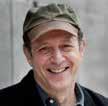
This project goes back to 2009, when I played occasionally with the Frankfurt-based Ensemble Modern. Richter was having a show at the Ludwig Museum in Cologne and we could meet briefly. There was warm, mutual respect and admiration. Seven years later, in 2016, we met at the Marian

of Four Organs at the Guggenheim Museum, Pendulum at the Whitney in ’69. My ensemble gave the premiere of Tehillim at the Hayward Gallery during the first show of Mark Rothko in the UK, in the Rothko Chapel in Houston and then in the Metropolitan Museum of Art. There was a real camaraderie on a personal, intellectual, and artistic level in the New York arts community in the ’60s and ’70s. I lived around the corner from Richard Serra—Michael Snow just a few blocks away. I’ve been married for 45 years to visual artist Beryl Korot with whom I’ve collaborated on two video operas. So I have a long history of being connected with visual artists.
—Steve Reich interviewed by Carol Ann Cheung Steve Reich has been called “the most original musical thinker of our time” (The New Yorker) and “among the great composers of the century” (The New York Times). His pieces Drumming, Music for 18 Musicians, Tehillim, Different Trains, and many others helped shift the aesthetic centre of musical composition away from extreme complexity and towards rethinking pulsation and tonal attraction in new ways. He continues to influence composers, mainstream musicians and artists all over the world.
One of the most famous artists to emerge from post-war Germany, Gerhard Richter is known for his prolific, varied, and widely influential practice. He has explored the intersection of photography and painting, making figurative canvases based on found images and abstractions that incorporate photographic effects. He studied at the Kunstakademie in Dresden and in Düsseldorf. He has exhibited extensively across the world, and his work has sold for tens of millions of dollars on the secondary market.

Manoj Kamps conductor
Manoj Kamps’ upcoming higlights include Netherlands

Radio Philharmonic Orchestra at Holland Festival, Rotterdam Philharmonic Orchestra, Orchestra of the 18th Century, and a return to the Royal Philharmonic Orchestra. A regular guest at Dutch National Opera, Manoj returns next season as co-creator and conductor of The Shell Trial, a new opera co-produced with Opera Philadelphia, Bregenz Festival and Het Geluid Maastricht, featuring the Concertgebouw Orchestra.
Sound Intermedia
Launched in 1996 by Ian Dearden and David Sheppard, Sound Intermedia revels in the challenge of bringing new work to its audience. Renowned for sophisticated sound designs for live events, they have worked in concert halls and opera houses around the world, collaborating with many of the preeminent creators and performers of new music of the last 70 years.
LONDON SINFONIETTA

The London Sinfonietta is one of the world’s leading contemporary music ensembles. Formed in 1968, we are a Resident Orchestra at the Southbank Centre and Artistic Associate at Kings Place, with a busy touring schedule. We have commissioned over 450 works and premiered hundreds more.
We experiment constantly, working with the best artists, collaborating with young people and the public to produce projects often involving film, theatre, dance and art. We challenge audience perceptions by commissioning work which addresses issues in today’s society, including tackling climate change and racial inequality. We support musical creativity in schools and communities across the UK, while our annual London Sinfonietta Academy is an unparalleled opportunity for young performers and conductors to train for their professional future with our Principal Players.
We continue to innovate with our digital Channel, featuring video programmes and podcasts about new music. Steve Reich described our stunning film of his Violin Phase as “the most satisfactory version [he’d] ever seen”, while our documentary film about Laura Bowler’s Houses Slide generated national press coverage. We created Steve Reich’s Clapping Music App for iPhone, iPad and iPod Touch, a participatory rhythm game that has been downloaded over 600,000 times worldwide. The back catalogue of recordings of the Ensemble over 50 years has helped to cement its world-wide reputation. More recent recordings include George Benjamin’s Into the Little Hill (Nimbus), Benet Casablancas’ The Art of Ensemble (Sony Classical), David Lang’s Writing on Water (Cantaloupe Music) Philip Venables’ debut album Below the Belt (NMC) and Marius Neset’s Viaduct (ACT).
Anna Clyne Fractured Time
— Anna Clyne



















